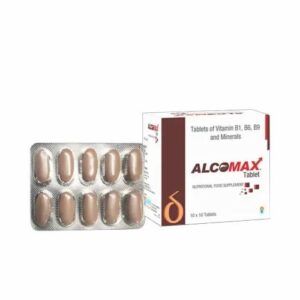FOLIC ACID + THIAMINE + PYRIDOXINE (VITAMIN B6) + MINERAL
Folic Acid: Drug: Folic Acid
Use: Folic Acid is a type of B vitamin that is used to treat or prevent folate deficiency. It is also commonly used to reduce the risk of certain birth defects when taken by pregnant women.
Mechanism of Action: Folic Acid is essential for the production and maintenance of new cells in the body, including red blood cells. It is involved in DNA synthesis and repair, as well as in the production of certain neurotransmitters.
Dose: The recommended daily dose of Folic Acid varies depending on the age, sex, and specific medical condition of the individual. For most adults, the typical dose is 400-800 micrograms per day. Pregnant women may require higher doses, usually around 600-800 micrograms per day.
Side Effects: Folic Acid is generally considered safe when taken at recommended doses. However, some individuals may experience minor side effects such as nausea, bloating, and a bitter taste in the mouth. These side effects are usually temporary and resolve on their own. In rare cases, high doses of Folic Acid may cause allergic reactions or mask symptoms of vitamin B12 deficiency, which can lead to nerve damage if left untreated. It is important to discuss any concerns or potential side effects with a healthcare professional.
Thiamine: Thiamine, also known as Vitamin B1, is a water-soluble vitamin that is essential for the proper functioning of the body. It is primarily used as a dietary supplement and is also available in injectable form for therapeutic use.
Thiamine plays a crucial role in the metabolism of carbohydrates, specifically in the conversion of glucose into energy. It acts as a coenzyme in various biochemical reactions that occur in the body, including the breakdown of glucose for energy production and the synthesis of neurotransmitters.
The recommended daily dose of thiamine varies depending on age, sex, and individual needs. For adults, the recommended daily intake is around 1.1 mg for women and 1.2 mg for men. However, higher doses may be required for certain medical conditions or deficiencies, with doses ranging from 50 to 100 mg per day.
Thiamine deficiency can result in a condition called beriberi, which can cause symptoms such as fatigue, muscle weakness, nerve damage, and cardiovascular problems. Supplementing with thiamine can help prevent or treat these deficiencies.
Thiamine is generally considered safe when taken in recommended doses, and there are no significant side effects associated with its use. However, high doses of thiamine, usually above 3,000 mg per day, may cause gastrointestinal discomfort, including nausea, diarrhea, and stomach upset.
In some cases, a person may have an allergic reaction to thiamine, although this is relatively rare. Signs of an allergic reaction may include rash, itching, swelling, dizziness, and difficulty breathing. If any of these symptoms occur, it is important to seek medical attention immediately.
Overall, thiamine is a crucial vitamin for maintaining proper metabolism and neurological function. While it is generally safe to use, it is recommended to consult with a healthcare professional before starting any new supplement or altering the dosage.
Pyridoxine (vitamin B6): Pyridoxine, also known as vitamin B6, is a water-soluble vitamin that plays a crucial role in the functioning of the body. It is involved in various biological processes such as neurotransmitter synthesis, red blood cell production, and amino acid metabolism. Pyridoxine is available as an over-the-counter supplement or can be obtained from dietary sources including meat, fish, grains, and vegetables.
The primary use of pyridoxine is to treat and prevent vitamin B6 deficiencies. It may also be prescribed in certain medical conditions such as:
1. Nausea and vomiting during pregnancy: Pyridoxine has been shown to be safe and effective in alleviating these symptoms.
2. Premenstrual syndrome (PMS): Some studies suggest that pyridoxine supplements can reduce the severity of PMS symptoms, including mood changes and breast pain.
3. Certain neurological disorders: Pyridoxine is used in combination with other medications to manage symptoms of some neurological disorders like epilepsy and peripheral neuropathy.
Pyridoxine acts as a coenzyme in various enzymatic reactions in the body. It is involved in the metabolism of amino acids, including the conversion of tryptophan to serotonin and niacin. Additionally, it helps in the synthesis of neurotransmitters like dopamine, serotonin, and gamma-aminobutyric acid (GABA).
The recommended daily dose of pyridoxine varies depending on age, sex, and specific medical conditions. For adults, the typical range is 1.3-1.7 mg per day. However, higher doses may be required for certain medical conditions, as prescribed by a healthcare professional.
Pyridoxine is generally well-tolerated when taken within the recommended dosage range. However, excessive intake of pyridoxine supplements can lead to toxicity, which may cause neurological symptoms such as numbness, tingling, and sensory neuropathy.
Other possible side effects of pyridoxine include:
1. Nausea and vomiting: These symptoms may occur at higher doses.
2. Photosensitivity: Pyridoxine can make the skin more sensitive to sunlight, leading to a higher risk of sunburn.
3. Headache and dizziness: These side effects have been reported in some individuals but are less common.
It is important to consult with a healthcare professional before starting pyridoxine supplementation to ensure proper dosage and avoid potential drug interactions or adverse effects.
Mineral: I’m sorry, but I couldn’t find any specific drug called “Mineral.” It is possible that you may be referring to a mineral supplement or a combination product containing minerals. Can you please provide more information or clarify your query?

